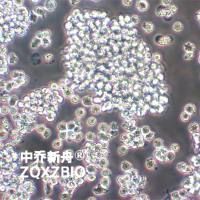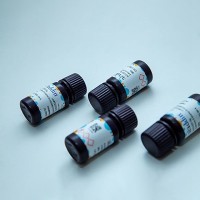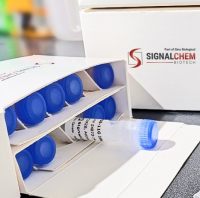Split GFP Complementation Assay for Quantitative Measurement of Tau Aggregation In Situ
互联网
506
A primary pathological hallmark of Alzheimer disease brain is the presence of neurofibrillary tangles, which are highly aggregated and insoluble accumulations of the microtubule-associated protein tau. Although it is becoming increasingly apparent that the mature neurofibrillary tangles are not the toxic species, intermediates between soluble tau and the neurofibrillary tangles likely play key roles in the neurode�generative process. Therefore, it is critically important to be able to quantitatively monitor the process of tau aggregation in living cells in order to understand the evolution of tau from its physiological to its pathological forms. To detect and quantitate the aggregation of tau in cells, we established a split green fluorescent protein (GFP) complementation assay. In this assay, GFP is separated into two spontaneously associating fragments that form the fluorescent fluorophore. The smaller GFP fragment, GFP11 , is fused to tau and coexpressed in cells with the larger fragment GFP1–10 leading to the association and reconstitution of the active fluorophore. However, if tau becomes partitioned into aggregates, the GFP11 tag will be less accessible for interactions with GFP1–10 resulting in a decrease in GFP complementation and fluorescence which can be monitored either using fluorescence microscopy or with a fluorescence plate reader. Thus, this assay is a valuable tool for measuring tau aggregation in living cells and evaluating �factors that modulate this process.









